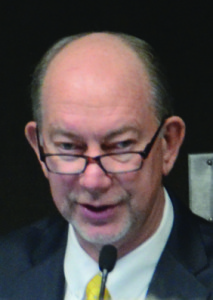
© 2016 by Steve Brawner Communications, Inc.
The Arkansas Legislature goes into session in January, but some of the most important decisions will be completed this month, without much debate.
That’s because, by Nov. 1, the House and Senate Education Committees will complete the state’s adequacy report, the biennial (once every two years) document that governs how and how much (always more) the state spends on K-12 public education.
The adequacy report was created in the wake of the Lake View case, a lawsuit brought on by a poor, rural school district in the Delta. A series of court decisions said the state wasn’t spending enough on education and wasn’t spending it in the right places – including on students like those in Lake View. In response, Arkansas consolidated schools (Lake View ended up being one) and poured money into education at a time when other states were cutting spending.
Fear of returning to court has governed Arkansas policymakers ever since. No matter what the economic or budgetary situation has been, schools are funded first, and they always get a raise.
There was a time when the money spigot was wide open, but now it’s closed to a small stream. Basically, schools get a cost of living adjustment every year now. The chairman of the House Education Committee, Rep. Bruce Cozart, R-Hot Springs, figured out a raise of 1.15 percent this past weekend and challenged members to create their own figures.
That’s probably about what will end up happening. The committees will finish their work and present the adequacy report to Gov. Asa Hutchinson by Nov. 1. His administration will tweak it, it will be presented to the Legislature, and the Legislature will pass it without much debate. Any dissenting legislators will be cut off by two words: Lake View.
That’s roughly 41.5 percent of your general revenue budget right there – general revenues being the state spending over which legislators have the most control. The general revenue budget this past year was $5.3 billion, and of that, $2.2 billion went to the public school fund.
There will be arguments over smaller parts of the education budget, including funding for school transportation. Current funding is based on the number of students school districts have, not the number of route miles their buses travel, so some compact districts pocket extra money that they use for other purposes, while far-flung districts lose money driving all over the county. There’s been talk for years about basing funding on route miles, which seems obvious, but that would mean some districts would win and some would lose. When that happens, expect a fight to occur.
Education advocates will say a 1 percent raise isn’t enough, but they’d better be glad they’re getting it. The state does have other priorities – colleges and universities, human services, highways, prisons – that must fight for what’s left after schools, and advocates would say it hasn’t been enough.
A case can be made that the Lake View case set the stage for Arkansas being one of the few Republican-leaning states to expand Medicaid through Obamacare to create the controversial private option, which purchases private health insurance for lower-income Arkansans. The state was primed to take the money partly because it can’t cut funding for schools.
But starting next year, the private option, which has been funded almost entirely using federal dollars, will start to nibble at the state budget. The state will be responsible for 5 percent of the cost in 2017 and 10 percent by 2020. Meanwhile, the number of Arkansans receiving benefits has soared past the expected 250,000 and continues to rise.
That’s kind of scary. Schools will still get a raise, but everyone’s looking at rising health care costs. Meanwhile, highway advocates are begging for money that’s just not available. The state is trying to figure out how to slow the growth of prison costs without making crime worse. And amidst all that, the governor says he wants to cut taxes again.
How do you make the numbers work? The state’s economy must continue to grow, which it is doing to the tune of a 3.9% unemployment rate. And the state will continue to take federal dollars wherever it can, including for highways and health care.
There will be a big debate about that – taking money for health care. Legislators will have time because 41.5 percent of the budget will already be settled. Nothing starts an argument like the word “Obamacare.” Nothing shuts it down like the words “Lake View.”